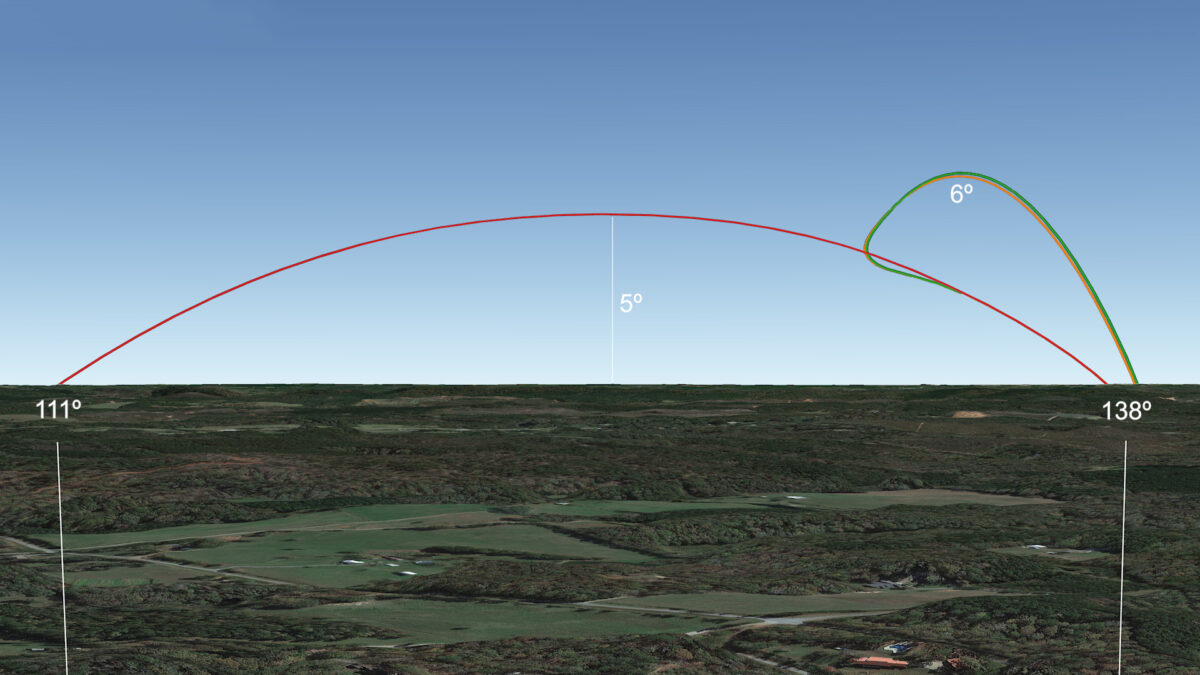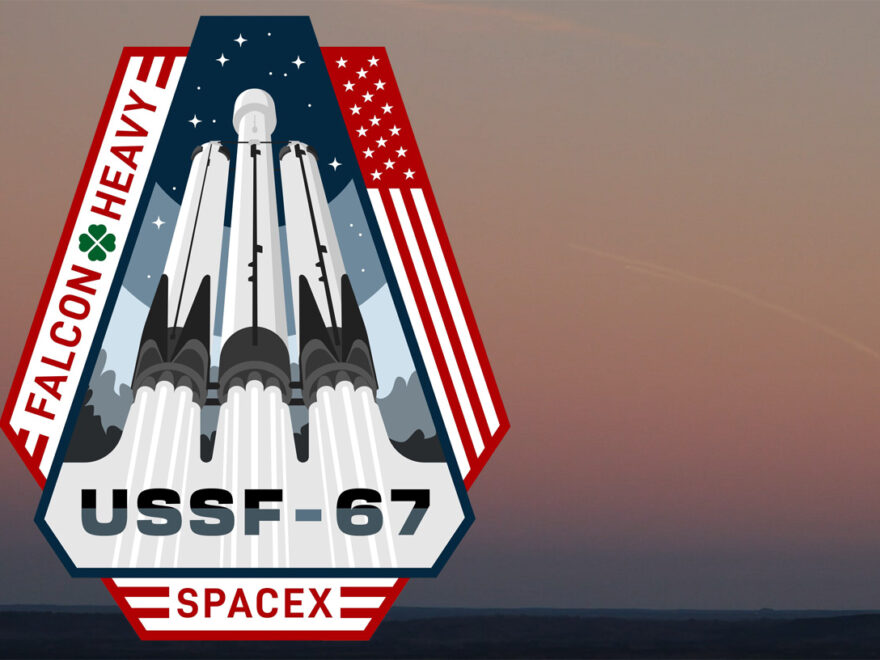This evening at 5:56pm, right at local sunset, SpaceX launched a Falcon Heavy rocket from pad 39A at Kennedy Space Center. The USSF-67 mission carried two satellites to orbit for the United States Space Force.
These Falcon rocket launches always present a dilema, do you track the center core/second stage or do you track the booster/side boosters? As I discovered with the CSG-2 launch last February, the thruster firings from the booster are easily visible during sunset launches so I decided I would follow the side boosters this evening. However the flight profile would be completely different. The CSG-2 launch to polar orbit had the booster in a nearly vertical flight profile. The USSF-67 launch to geostationary orbit would have the side boosters fly a goose head shaped trajectory.

This wide angle shot gives you a rough idea of what the launch looked like to the naked eye.
As is typical for launches at this extreme distance (~380 miles), the rocket plume exhibited a swimming tadpole appearance as it climbed through the dense atmosphere within 1-2° of the horizon. As it climbed higher the image became more stable.
Once the boost back burns finished the side boosters became harder to track. The upper booster was brightly illuminated by the sun while the lower booster was not visible at all except for the thruster firings.
Once the boosters began descending I lost them completely until the entry burns and even then I only briefly captured one burn.

